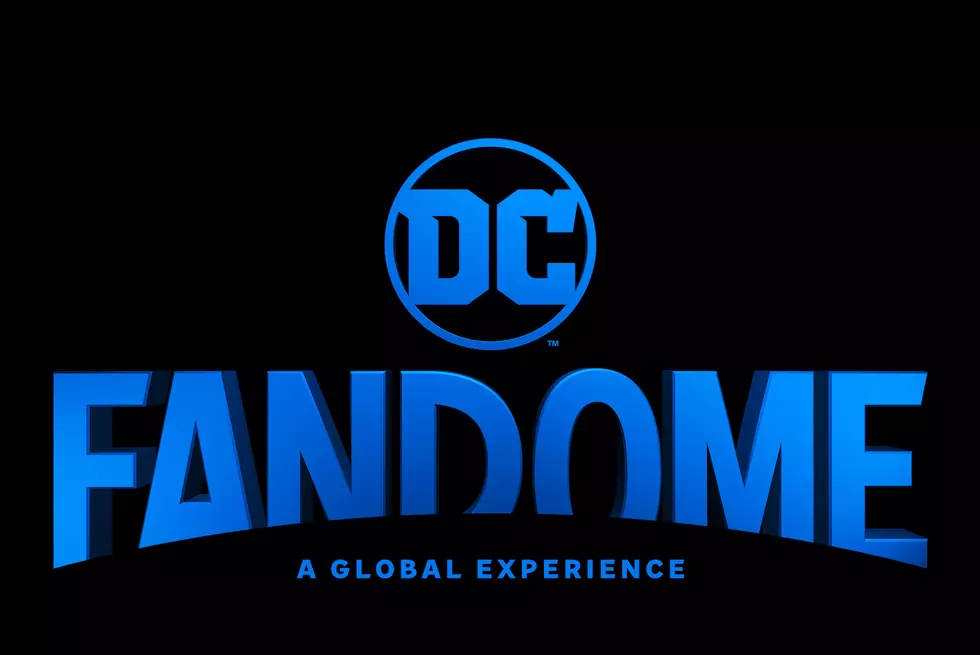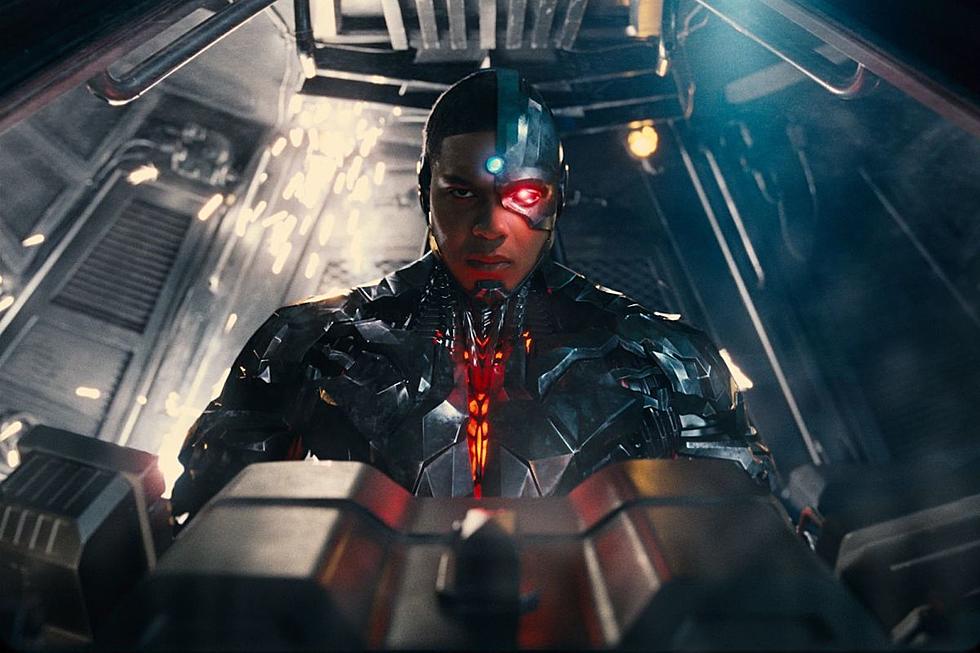
The Evolution of the Flash: Best Flash Stories by Decade
Many of comics’ most popular heroes have been around for decades, and in the case of the big names from the publisher now known as DC Comics, some have been around for a sizable chunk of a century. As these characters passed through the different historical eras known in comics as the Golden Age (the late 1930s through the early 1950s), the Silver Age (the mid 1950s through the late 1960s), the Bronze Age (the early 1970s through the mid 1980s) and on into modern times, they have experienced considerable changes in tone and portrayal that reflect the zeitgeist of the time.
With this new feature we’ll help you navigate the very best stories of DC Comics’ most beloved characters decade by decade. This week, we’re taking a look at the Flash.
1940s: “The Rival Flash!”
Flash Comics #104, by Robert Kanigher (possibly John Broome) and Carmine Infantino
The original Flash was a guy named Jay Garrick, who accidentally breathed in some hard water fumes, which he found allowed him to move at incredible speeds. He then, naturally, ran around in a lightning bolt t-shirt with a bucket on his head and hung out with some guys who looked suspiciously like the Three Stooges.
His comics were very popular in the 1940s, but as with all superhero comics (with a handful of notable exceptions), his popularity declined in the years after World War II. The story selected here is actually the very last Flash story of the Golden Age, which features the Flash encountering a speedster very much like himself, but with dark intentions, in a story that would prefigure the later Reverse-Flash of the Silver Age. This story also handily recaps Jay's origin, all told by the team that would come to revamp the Flash seven years later.
Best of the rest: “Origin of the Flash” (Flash Comics #1), “Stone Age Menace” (Flash Comics #86), “The Slow Motion Crimes” (Comics Cavalcade #24), “The Flash and the Black Widow” (Flash Comics #66)
1950s: “Menace of the Super-Gorilla/The Pied Piper of Peril!”
Flash vol 1 #106, by John Broome and Carmine Infantino
As I said, the popularity of superheroes as a genre fizzled somewhat in the post-war years, but after the implementation of the Comics Code Authority rendered more popular genres like crime and horror basically impotent, superheroes were primed for a comeback in the mid-'50s. Some enterprising editors at DC decided to infuse the superhero genre with sci-fi elements for an atomic age, and, boom, the Silver Age of comics was born with the first appearance of the second Flash, Barry Allen.
There are only a handful of Flash comics in the decade of the 1950s, but nearly every one of them introduces one classic member of Flash's rogues gallery after another: Captain Cold, Mirror Master, and the Weather Wizard appear in quick succession. The selection here features the debut of not one, but two classic Flash villains: Gorilla Grodd and the Pied Piper.
Flash's Silver Age adventures (encompassing the 1950s and 1960s) can be found collected in either the Flash Omnibus or the Showcase Presents the Flash volumes.
Best of the rest: “Mystery of the Human Thunderbolt” (Showcase #4), “The Coldest Man on Earth” (Showcase #8), “The Master of Mirrors!” (Flash vol 1 #105), “Return of the Super-Gorilla” (Flash vol 1 #107), “The Super-Gorilla's Secret Identity” (Flash vol 1 #108)
1960s: “Flash of Two Worlds”
Flash vol 1 #123, by Gardner Fox and Carmine Infantino
The 1960s were a boom time in creativity for the Flash, as evidenced by the relatively hefty honorable mentions section for this decade (believe me, it could have been longer), as writers like John Broome and Gardner Fox find their footing with the character, and artist Carmine Infantino gradually shows why he's flat-out one of the best artists in comics history.
It would almost be hard to pick a single issue as the best for this decade if it weren't for the fact that Flash #123 is literally one of the most important comics of all time. It was this story, in which Barry Allen finds himself meeting the previous Flash, Jay Garrick, after vibrating his molecules at the right frequency, which introduced the concept of the multiverse, which would lead to basically all of DC's most earth-shattering, never-be-the-same-again event stories up to and including the currently running Multiversity.
Best of the rest: “Meet Kid Flash!” (Flash vol 1 #110), “Menace of the Reverse-Flash!” (Flash vol 1 #139), “Gauntlet of Super-Villains” (Flash vol 1 #155), “The Race Between Superman and Flash” (Superman vol 1 #199), “Flash—Fact or Fiction?” (Flash vol 1 #179), “Captain Cold Blows His Cool” (Flash vol 1 #193), “Stupendous Triumph of the Six Super-Villains!” (Flash vol 1 #174), “The Doorway to the Unknown” (Flash vol 1 #148)
1970s: “The Death of Iris Allen”
By the end of the 1970s, superhero stories were gradually darkening, as creative teams were adding more violence and more “realistic” social and personal issues such as drugs and domestic violence. Even the Flash, who had prior to this been perhaps the poster child for the gee-whiz four-color creativity of the Silver Age, could not resist this change for long.
This story by Cary Bates, who wrote the Flash title for almost 150 issues from the early '70s until the mid-'80s, sees the Flash's wife Iris (sorry if this is a spoiler for the TV show?) get killed by his arch-nemesis the Reverse-Flash. Barry kind of flips out trying to solve the murder and even considers retiring from the hero game altogether.
Best of the rest: “Beyond the Super-Speed Barrier!” (DC Special Series vol 1 #11), “The Crimson Comets of Fallville High” (Adventure Comics #459)
1980s: “The Trial of the Flash”
Flash vol 1 #323-327, 329-336, 340-350, by Cary Bates and Carmine Infantino
It took a couple of years after the death of Iris, but Barry ends up (accidentally) killing the Reverse-Flash when it seems as if he is going to kill Barry's new fiancee. Barry subsequently goes on trial for manslaughter in this epic (especially for the time) two year storyline that represents the very end of the Bronze Age and the very end of Barry's tenure as the Flash (for now).
After this story, Barry would die a big damn hero saving literally all of existence and be replaced as the Flash by his nephew Wally, who had previously been the Kid Flash. Good news: Wally stars in some really great comics. Keep reading.
Best of the rest: “A Flash of the Lightning!” (Crisis on Infinite Earths #8), “1981--A Flash Odyssey” (Flash vol 1 #300), “Mystery of the Human Thunderbolt” (Secret Origins Annual #2), “Heart...of Stone!” (Flash vol 2 #2), “Velocity 9” (Flash vol 2 #12-17), “Dr Alchemy and Mr Desmond” (Flash vol 1 #287-289)
1990s: “The Return of Barry Allen”
Flash vol 2 #73-79, by Mark Waid and Greg LaRocque
If you have not been following this feature in the last several installments, you will not realize what a relief it is for me to be able to name a non-controversial pick for best of the '90s. I feel pretty confident that even a casual Flash fan would recognize “The Return of Barry Allen” as not only the best Flash story of the '90s, but probably the best Flash story of all time. (If you are new to the Flash, you might be thinking, “Didn't you just tell me that Barry just died? That's fast, even for comics, and even for the fastest man
alivedeadalive.” Well, no spoilers, but things are not what they seem.)Even if it weren't for the fact that basically every story in Mark Waid's extended tenure on the Flash is basically a stone-cold classic, the '90s as a decade are still an embarrassment of riches, as it also features William Messner-Loebs's underrated run and a relatively brief but high impact run written by Grant Morrison and Mark Millar.
Best of the rest: “Born to Run” (Flash vol 2 #62-65), “Terminal Velocity” (Flash vol 2 #95-100), “Nobody Dies” (Flash vol 2 #54), “The Human Race” (Flash vol 2 #136-138), “Emergency Stop” (Flash vol 2 #130-132), “Still Life in the Fast Lane” (Flash vol 2 #134), "Dead Heat" (Flash vol 2 #108-111, Impulse #10-11), “The Black Flash” (Flash vol 2 #139-141), “Flashing Back” (Flash vol 2 #0)
2000s: “Blitz”
Flash vol 2 #197-200, by Geoff Johns and Scott Kolins
The decade of the 2000s saw an extended run on the Flash by Geoff Johns, who would go on to basically dominate DC Comics for the next decade-and-change on various titles. But before he became DC's Chief Creative Officer, he would write a five-year stint on the Flash, where, together with such artists as Scott Kolins and Ethan Van Sciver, he would become best known for revamping and fleshing out the Flash's rogues gallery.
In “Blitz” he goes the extra mile of introducing an entirely new version of the Reverse-Flash who simply goes by Zoom. The new Zoom's ability to manipulate time makes him faster even than any of the speedsters around, which increases the tension as the reader fears Zoom is going after Wally's love, just like the original Zoom did Iris, only to find that he has something else in mind...
Geoff Johns's run on Flash is collected in a series of three omnibus volumes.
Best of the rest: "Rogue War" (Flash vol 2 #220-225), "Absolute Zero" (Flash vol 2 #182), “Ignition” (Flash vol 2 #201-206), Final Crisis: Rogues' Revenge #1-3, “Blood Will Run” (Flash vol 2 #170-176)
And that's it for the decades we've experienced so far! The 2010s are halfway over; we'll have to see who comes out on top in five years! Will anything beat Move Forward? We'll see!
More From ComicsAlliance









